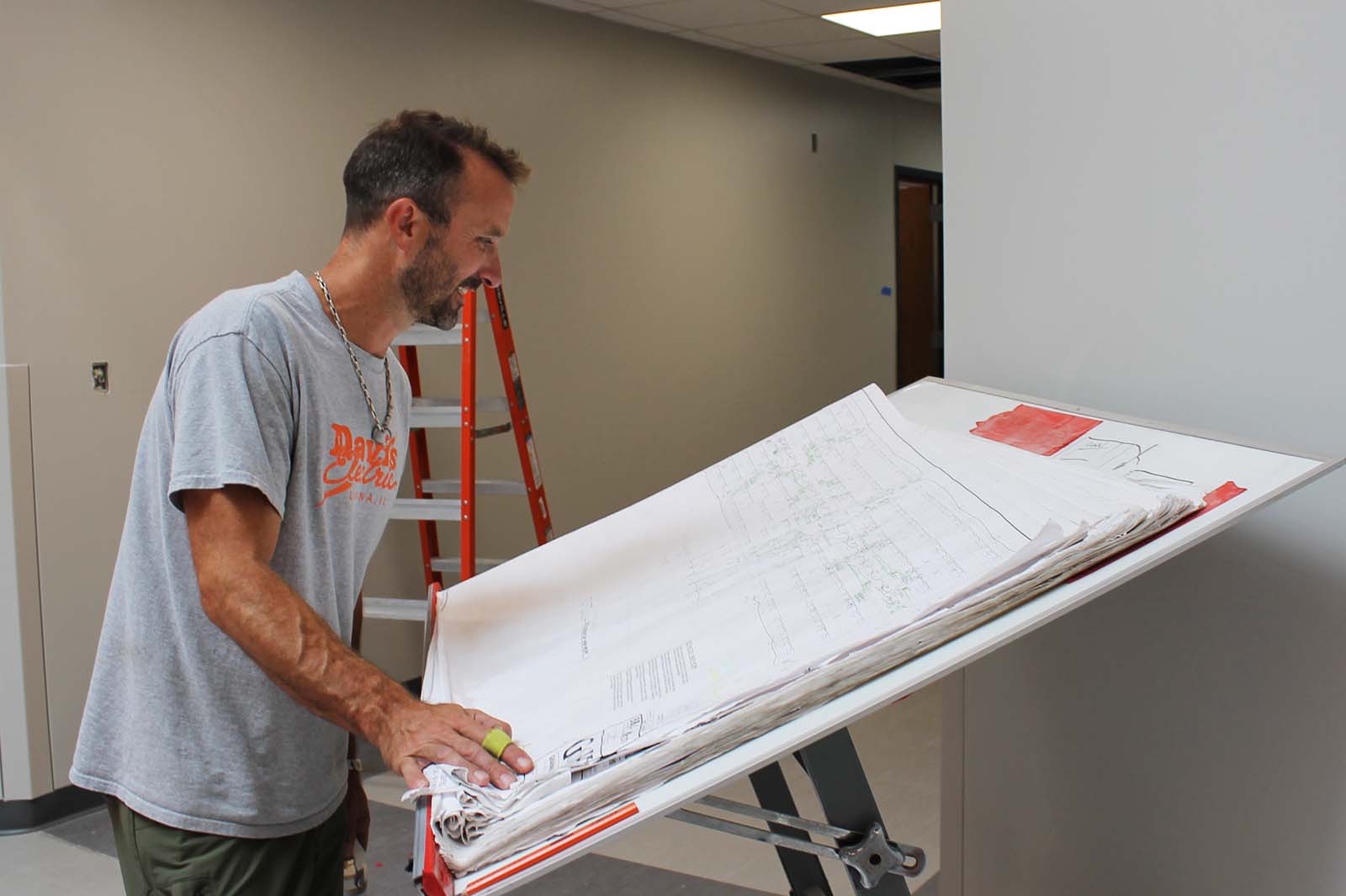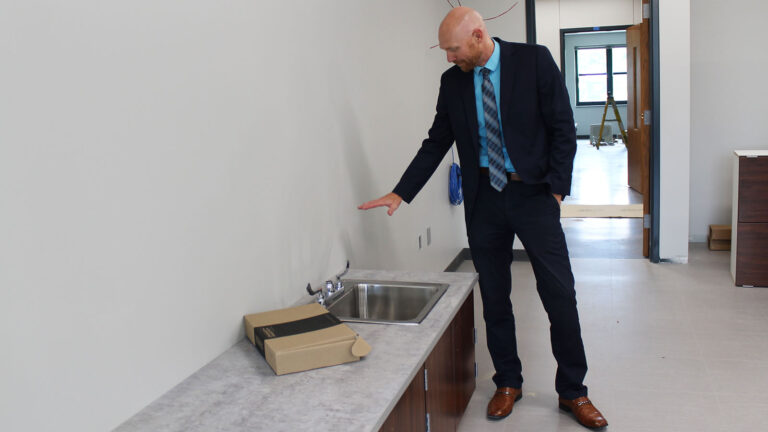SULLIVAN – While the focus of federal COVID-19 relief money for schools was on recovering from the pandemic, districts were allowed to use some for construction.
For many districts, it was a once-in-a-lifetime infusion of cash.
“When funding is tight, a lot of things that are put off are bigger projects. It’s a lot harder to come up with $7 million to do something than it is to come up with $30,000 to do something,” said Sullivan Superintendent Ted Walk.
Sullivan Community Unit School District 300 is a rural, medium-sized district in Moultrie County. It is one of the most underfunded districts in central Illinois, according to the state’s evidence-based funding formula. (Walk added that it is efficient with its few dollars.)
Sullivan stayed open during the pandemic, and the district used COVID-19 relief to pay for extra teachers and substitutes and new disinfecting procedures.
Walk said that federal help also allowed the district to save general state aid for construction projects that had long been on their wish list.
“We have been talking about the need for classroom space, since I’ve been in the district — so for at least 17 years,” Walk said.
Sullivan is finishing an addition to its elementary school that was envisioned when it was first designed in 1992. It will allow fifth graders to return to the school from their overflow location at the middle school. The addition also provides new classroom space for kindergarteners and students with disabilities who need self-contained classrooms.
Walk said the project is ahead of schedule and it will open when summer vacation ends in mid-August.
How is your school district spending COVID-19 relief money?
Congress gave out Elementary and Secondary School Emergency Relief (ESSER) Funding in three acts in 2020 and 2021 to help districts reopen during the COVID-19 pandemic.
Underfunded districts got more money than wealthy districts. Aside from some rules about spending on learning recovery, districts had wide latitude in how to spend the money.
Districts have until late 2024 to spend or commit the money to projects.
Search above for your district or county. You can also click on column headings to find which schools in Illinois have spent the largest percentage of their aid on construction services.
This table includes data from the Illinois State Board of Education, which collects information on construction spending in three different categories. Each category can include both construction and non-construction projects, and some of the categories overlap, according to ISBE. Here, we use “2530-Facilities Acquisition and Construction Services” as the closest approximation of a construction category.
You can see how else – like salaries and employee benefits – your district has spent COVID money on the state ESSER dashboard.
Underfunded schools in central Illinois are twice as likely as wealthy schools to spend on construction
While about half of underfunded school districts in central Illinois have spent some of their COVID relief on construction, only about a quarter of better funded districts have.
We use the state’s evidence-based funding formula to draw a border between underfunded districts (Tier I) and better funded districts (Tier II, III and IV). The state calculates the tiers based on how well local taxes could cover the needs of the district’s students.
Are districts building new schools?

Decatur Public Schools is using ESSER for its new American Dreamer STEM Academy.
Other districts, like Cerro Gordo CUSD 100, are using the relief money for air quality projects.
Retired superintendent Brett Robinson said the Cerro Gordo High School building dates from 1929. Currently, each classroom has an air conditioning window unit and radiators.
“When an old radiator or a steam valve would malfunction, you might have a classroom here or there that is really hot in the winter, and you open the window because that’s really the only way — and of course that’s not an efficient use of energy,” Robinson said.
Installing central heating and air has been on the community’s wish list for a while. Robinson said it seemed like a perfect project for the COVID money, because a higher quality HVAC system can help prevent the spread of respiratory illnesses like COVID.
The project will continue past the start of the school year, into early September. Robinson said the administration knew from early on that key equipment would be delayed. He said the window units will not be switched out until after that equipment arrives, so students will have AC when they start school.
Robinson retired as Cerro Gordo superintendent at the end of June.
Emily Hays is a reporter for Illinois Public Media. Follow her on Twitter @amihatt.

